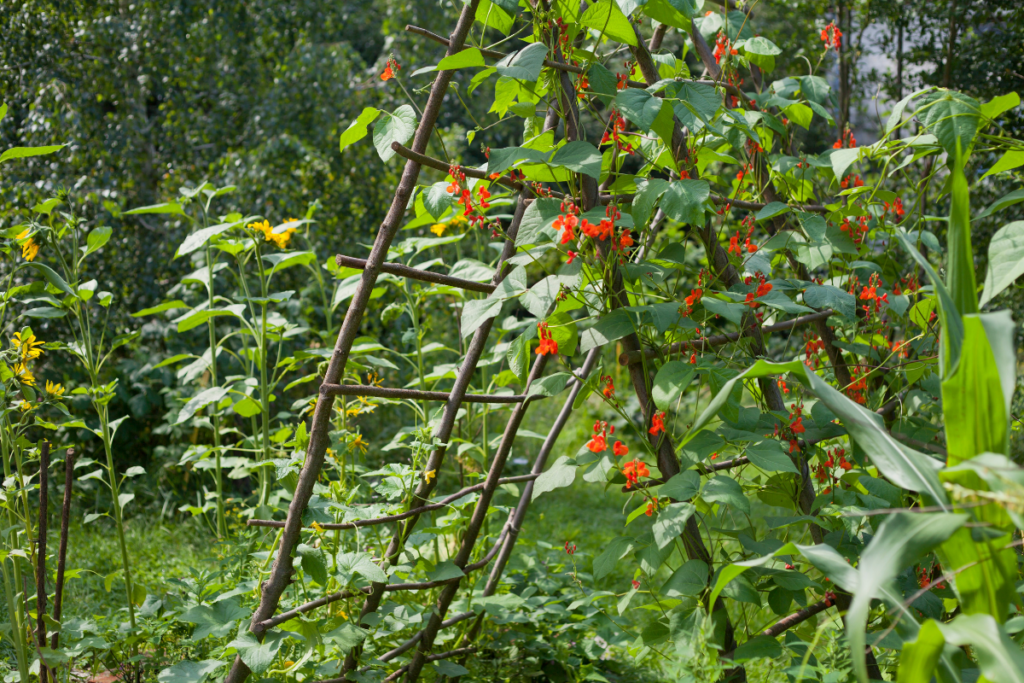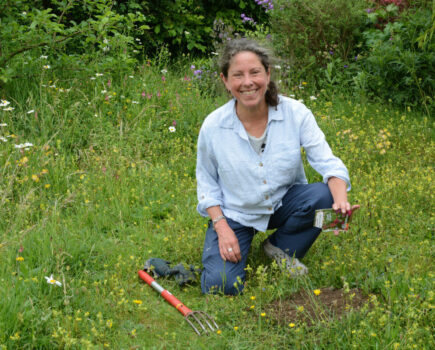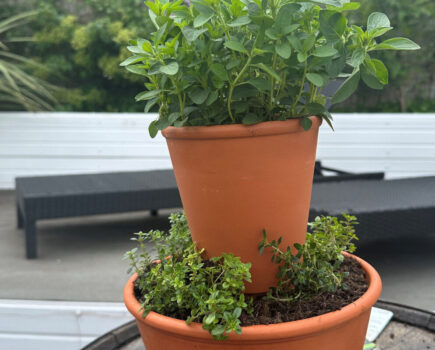Warm conditions will lead to bumper harvests
You may succeed with earlier sowings of French and runner beans, but it becomes easier now summer is advancing and we have warmer soil. In fact most of the skill with these beans involves harvesting pods at their prime before they go over. They usually do well once they get going, apart from in cold summers or hot droughts. However given a warm summer and plenty of moisture either may produce more beans than you can cope with. I like to ask audiences at talks who grows runner beans, and have they ever not given away a carrier bag full, or several? It really is famine or feast, fortunately usually the latter.
French aka haricot/green/flageolet/snap/wax/dwarf beans are closely related to runner beans which, (other than having the potential to run over), have larger pods and seeds. Confusingly, there are also running French beans that climb, recent hybrid crosses, and even dwarf runners (an odd ‘improvement’). Then add into the mix borlotti (posh runners), yard-long (okay foot or two, not a yard!) and pea-bean, all of which are yet more close relatives, and all needing really warm summers.

Beans know best
Marvellously, all these beans crop really well in soils with low fertility as they’re leguminous and make their own fertiliser in nodules on their roots. (Indeed it’s worth growing beans as green manure to be dug in just for this extra fertility.) But although well fertilised soil is not necessary, humus rich soil is as this holds the moisture the beans crave. So digging in or mulching beforehand with well-rotted manure, compost or leaf mould will improve your beans’ performance. The old advice of digging trenches filled with wet newspaper, offal, raw manure etcetera is rather excessive and doesn’t do much more for all the extra effort. However, regular generous watering from early on, and especially when flowering, dramatically improves your crops.
Do give them a step up with some support
Obviously runners and running French beans need canes or sticks to spiral up. Floppy nets or strings work but are not as satisfactory – if you were clambering you’d prefer something rigid to cling to wouldn’t you? The dwarf beans need no support but cannot return as much yield per sq ft, though they are quicker to grow so more batches can be sown over at least another month or so, perhaps longer, as we get milder autumns.
Then pick and come again and again…
As with sweet peas, cucumbers and courgettes you must pick frequently, and thoroughly, as leaving any to ripen will cause the plants to relax and stop producing. Most beans are ready to be eaten fresh and green in the pod when you first notice the position of the seeds by the slight swelling of the pods. Once the seeds swell to obviously ripe size the pod becomes tougher and the seeds are eaten shelled on their own. Of course seeds, of all types, and of varieties just for drying, can be left to dry and collected for use in winter (soak overnight before cooking). And, as beans stay fairly true to type this means you can save your own seeds for next year and you’ll never have to buy again.
Find more tips, advice and articles like this at the Amateur Gardening website. Subscribe to Amateur Gardening magazine now.





